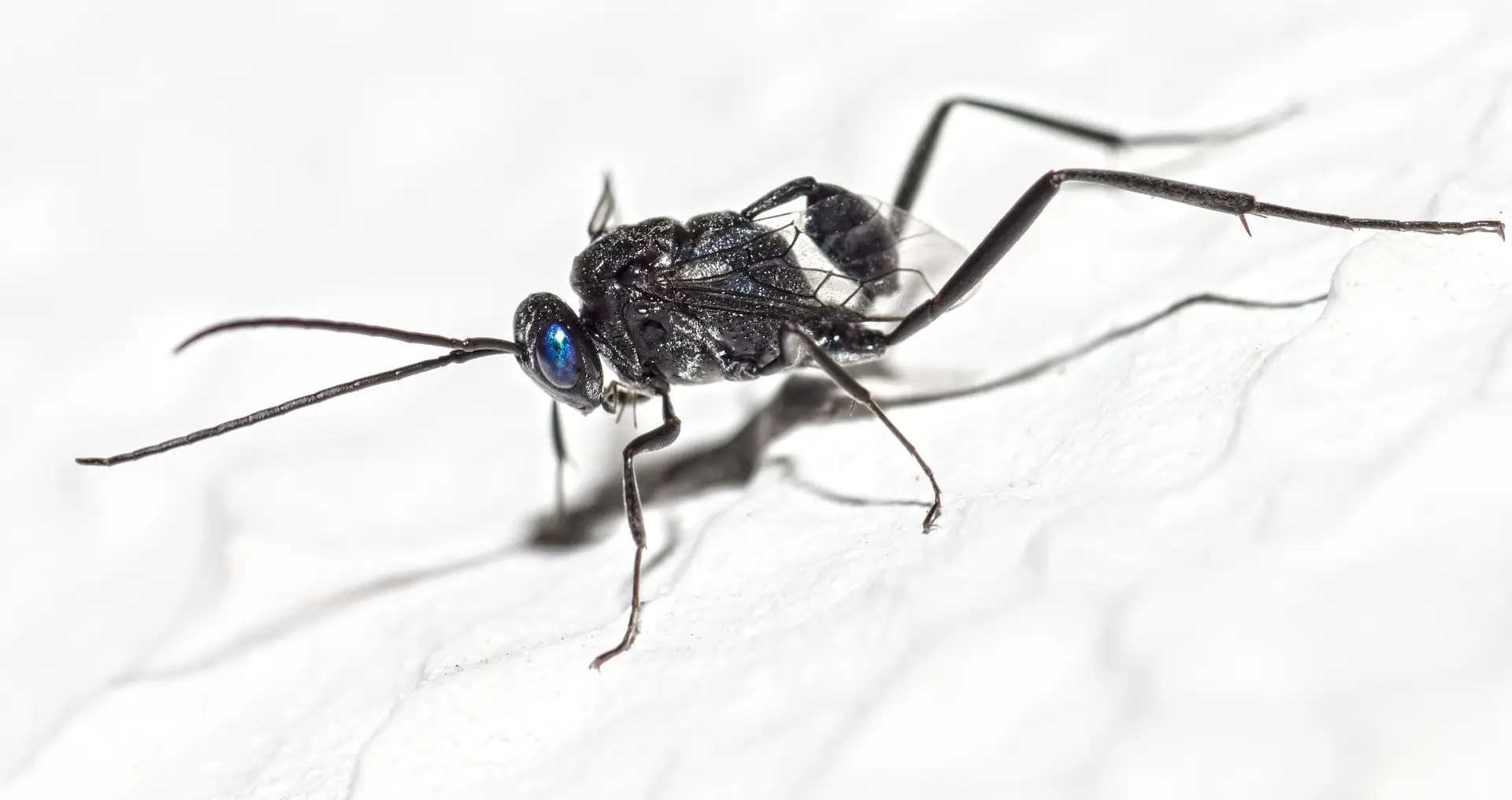Cockroach egg parasitoid wasps, specifically referring to Evania appendigaster, also known as the Ensign Wasp, are a fascinating and beneficial group of insects. Here’s a detailed overview focusing on their role as parasitoids of cockroach eggs:
Overview
Evania appendigaster, commonly known as the Ensign Wasp, is part of the Evaniidae family. These wasps are known for their unique behavior of parasitizing cockroach egg cases (oothecae), which makes them effective biological control agents against cockroach populations.
Appearance
- Size: Ensign wasps are relatively small, with adults typically measuring between 5 to 10 millimeters in length.
- Color: They are predominantly black, providing them with a sleek and somewhat shiny appearance.
- Body Shape: Their most distinguishing feature is their small, flag-like abdomen that is attached high on the thorax by a narrow stalk (petiole).
- Wings: The wings are clear or slightly smoky and are usually folded flat over the back when the wasp is at rest.
- Antennae: They possess long, thread-like antennae.
Habitat
- Preferred Habitats: These wasps are commonly found in environments where cockroaches thrive, such as homes, commercial buildings, and other human-made structures. They can also be found in natural habitats like forests where suitable hosts are present.
- Geographic Range: Ensign wasps are found worldwide (cosmopolitan distribution), particularly in regions where their cockroach hosts are present.
Behavior and Lifecycle
- Feeding: Adult ensign wasps primarily feed on nectar and other sugary substances.
- Reproduction: Female ensign wasps seek out cockroach egg cases (oothecae) to lay their eggs. They use their ovipositor to insert an egg into each ootheca.
- Parasitism: The wasp larvae develop inside the cockroach egg case, feeding on the cockroach eggs. This parasitic relationship effectively kills the cockroach embryos, preventing them from hatching.
- Development: After consuming the contents of the egg case, the larva pupates within the ootheca. Eventually, an adult wasp emerges, ready to continue the cycle.
Ecological Role
- Biological Control: Ensign wasps play a crucial role in naturally controlling cockroach populations. By parasitizing cockroach egg cases, they reduce the number of cockroaches that reach maturity.
- Indirect Sanitation: By controlling cockroach populations, ensign wasps contribute to improved sanitation in areas where cockroaches are common pests.
Interesting Facts
- No Sting: Despite their somewhat intimidating appearance, ensign wasps are harmless to humans and do not sting.
- Easily Recognizable: The unique attachment and shape of their abdomen make them easy to identify.
- Beneficial Insect: Their role in controlling cockroach populations makes them a beneficial insect, particularly in urban environments.
Identification Tips
- Distinctive Abdomen: Look for the small, flag-like abdomen attached high on the thorax.
- Coloration: Their uniform black color and compact size help in distinguishing them from other wasp species.
- Habitat: They are often found near cockroach habitats, especially where cockroach egg cases are present.
Summary
Cockroach egg parasitoid wasps, particularly Evania appendigaster, are beneficial insects that play a vital role in controlling cockroach populations. Their unique appearance and behavior make them fascinating subjects of study and important allies in pest management. By parasitizing cockroach egg cases, they help reduce the number of cockroaches in various environments, contributing to improved sanitation and ecological balance.
Views: 342
Subscribe to the newsletter:
